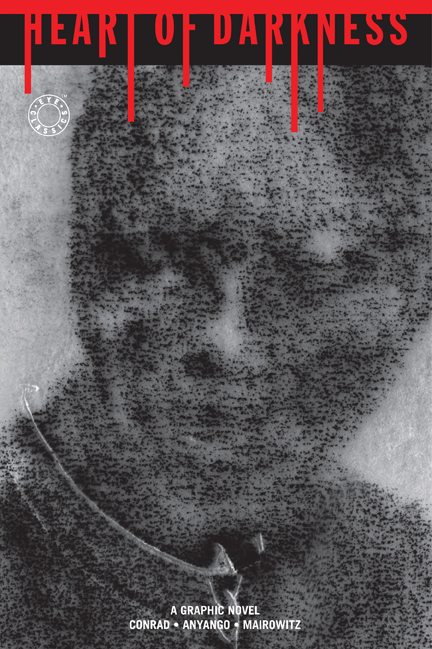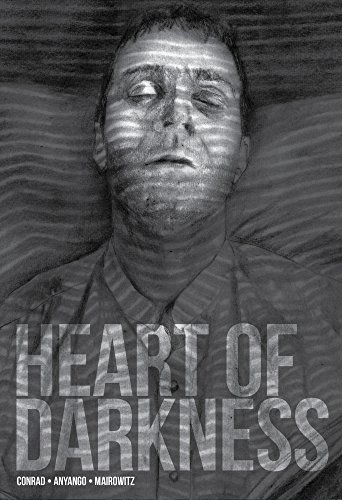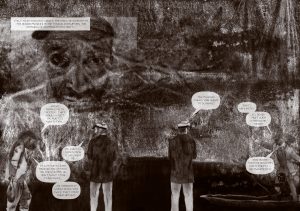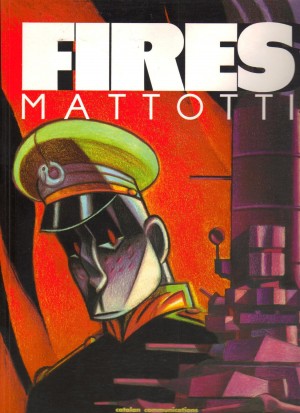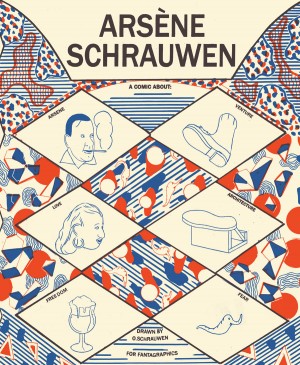Review by Graham Johnstone
Joseph Conrad’s novella Heart of Darkness concerns a riverboat sailing up the Congo into the ‘darkness’ of relatively uncharted central Africa. It spawned numerous adaptations, most famously Francis Ford Coppola’s 1979 film Apocalypse Now. Written at the end of the 19th Century, the book retains a timeless mythic power, but has dated painfully in its depiction of Africa. Perhaps that’s why the Coppola film updates the setting to more recent colonial misadventures in Vietnam.
These issues with the source text are acknowledged in the introduction by David Zane Mairowitz, who also highlights the ambivalence of protagonist/narrator Marlow. Conrad had recently made the same journey, and Mairowitz (credited as ‘text adaptor’) includes extracts from Conrad’s journals, though primarily just noting places and dates. Otherwise, he provides a straightforward adaptation, albeit with the worst taboo language removed, framed by Marlow (drawn as Conrad) regaling shipmates with the story of his epic journey. The key events are here: the sail into the interior; the first sight of African colleagues – emaciated, dead and dying; the trek to the central station; the frustrating wait for the boat to be repaired; and the final journey upstream to meet company man gone native Kurtz. However, both books are less about the plot than the journey itself and revelations along the way. This is helped by the retention of highlights of Marlow’s poetic narration: “…the stillness of an implacable force brooding over an inscrutable intention. [The Congo] looked at you with a vengeful aspect”. All of this adds up to a sound adaptation, though what really elevates it is Catherine Anyango’s art.
Anyango renders the story in pencil and charcoal with rubbed and incised elements, and occasional washes – still an uncommon approach in comics. She incorporates the book’s motifs of darkness and light from the very first pages. Conrad’s twilight ‘red sun’ is here a grey disc before turning light against the darkening sky, this is mirrored in adjacent images: the black spot in dominoes, the lighthouse beam across the port, etc. The media used also gives the story an impressionistic, hallucinatory quality, evoking Marlow’s talk of “having often ‘a little fever’’’ and “the dream sensation that pervaded all [his] days…” When Marlow meets the chief accountant and takes him for “a sort of vision… a high starched collar, white cuffs…” Anyango’s panels show only these fragmented details. Her drawings often have a stylised flatness that situates the viewer safely outside the action – creating a sense of detachment, perhaps reflecting Marlow’s situation. This is particularly true of the numerous birds-eye views, which also chime with Marlow’s fascination with maps. In the spread of the caravan walking down the beaten track, the eddying swirls of lines hover between likeness of the landscape and the codified symbols of cartography. Although all this may look unlike comics, she can effortlessly capture moment and movement, often as a sequence of panels comprising a single space. The confidence does slip occasionally, most crucially, in the final encounter with the mysterious Kurtz – straight pencil work on a spread and some of the panels renders them banally illustrative, undercutting this climactic scene. Also less effective, are the lettering, caption boxes and occasional balloons, but these are minor gripes.
This is a powerful and evocative graphic novel, with few comparators. It’s Anyango’s first, and a thematic extension of her wider art practice. News of 2×2, a further graphic novel in progress is very welcome.
The numerous double-page spreads, often with panels overlaid upon them, are best seen fully flat, giving the ebook a selling point over the paperback.
